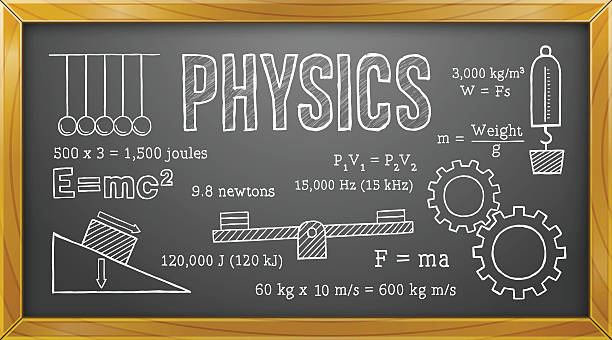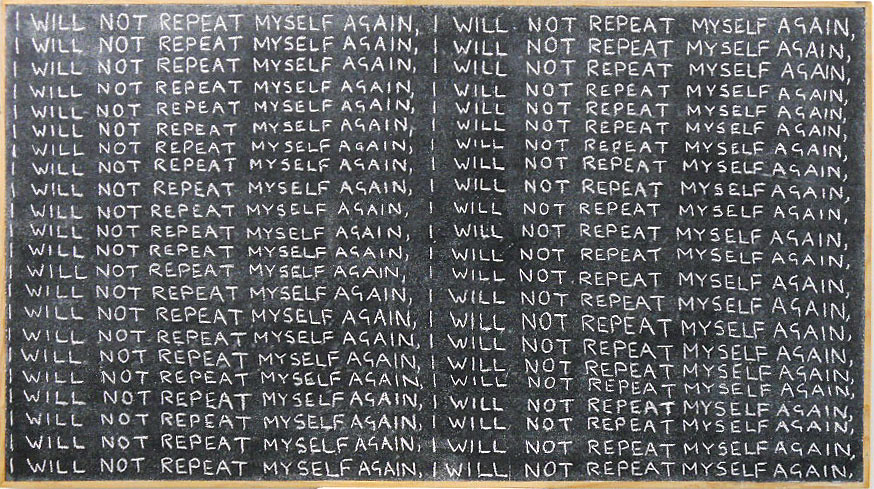What are the disadvantages of blackboards in schools?
Feb 23, 2022 · Blackboard chalk is made in a shape of a stick that is 10mm thick and 80mm long, out of calcium sulfate in its dehydrate form – as gypsum, or calcium carbonate. Related. Categories W Blackboard Post navigation. Nortwestern Blackboard. Reopen An Attempt Blackboard. Search for: Recent Posts.
How many colleges in the US use blackboard?
Oct 26, 2020 · Blackboard chalk is made … 9. Chalk Facts for Kids – Kiddle encyclopedia. https://kids.kiddle.co/Chalk. Although traditionally composed of natural chalk, modern blackboard chalk is generally made from the mineral gypsum (calcium sulfate), often supplied in sticks … 10. Your Chalk Might Be Made From Million-Year-Old Plankton …
What is blackboard chalk made out of?
Feb 04, 2022 · Blackboard chalk is made in a shape of a stick that is 10mm thick and 80mm long, out of calcium sulfate in its dehydrate form – as gypsum, or …
Why are so many blackboards Green?
Oct 18, 2021 · A slate is a small, rectangular blackboard made from slate stone. They had two sides and the edges were wrapped in leather or wood to … 11. name the rocks that is used to write on blackboard – Brainly.in

Is blackboard made up of wood?
Most modern chalkboards are made of porcelain enamel. In this particular manufacturing process, a tough and durable material such as steel is used as the base.
What kind of wood are used for Blackboard?
The surface of the chalkboard is usually made with a hardboard or MDF product. The surface of these boards is smooth. The first chalkboards were slate.Jun 8, 2017
Is blackboard chalk made of chalk?
Blackboard and sidewalk chalk were originally made from the sedimentary rock of the same name; a form of soft limestone. Chalk, composed principally of calcium carbonate (CaCO3), formed underwater by slow accumulation and compression of the calcite shells of single-celled coccolithophores.Oct 19, 2009
How do you make chalkboard plywood?
0:177:18How to Make a Large Framed Chalkboard - YouTubeYouTubeStart of suggested clipEnd of suggested clipI've got a lot of space at home so I've opted for quite a large oversized chalkboard as you can seeMoreI've got a lot of space at home so I've opted for quite a large oversized chalkboard as you can see I've practically nearly used a whole sheet of plywood. Here I've gone for a 2 meter.
What are the four types of blackboard?
Types of chalk boardPresented by: Mr. Manjunath. Beth Associate professor & HOD OF MSN DEPARTMENT.TYPES OF CHALK BOARD.ORDINARY CHALK BOARD.ROLLER CHALK BOARD.MAGNETIC BOARD.BLACK CERAMIC UNBREKABLE BOARD.BLACK/GREEN GLASS CHALK BOARD.LOBBY STAND BOARD.More items...
Why is blackboard color green?
The color change came in the 1960s, when companies sold steel plates coated with green porcelain-based enamel instead of the traditional dark slate. The new material was lighter and less fragile than the first blackboards, so they were cheaper to ship and more likely to survive the journey.Nov 24, 2017
Who invented the blackboard?
James PillansSo who deserves credit for the invention of the blackboard? James Pillans, Headmaster of the Old High School in Edinburgh, Scotland has been credited with the invention. He first used the boards to teach his geography lessons to his students.Jan 24, 2012
Is blackboard chalk toxic?
While chalk is minimally toxic, not poisonous in small amounts, and may not hurt you, it's never a good idea to eat chalk. A pattern of eating chalk is a different story, however. Eating chalk often can disrupt your digestive system and cause damage to your internal organs.Dec 9, 2019
What is a blackboard?
The blackboard is a recent innovation. Erasable slates, a cheap but durable substitute for costly paper and ink, had been in use for centuries. Students could practice reading and writing and math on their slates, in the classroom or at home.
What is a blackboard in education?
Teachers now had a flexible and versatile visual aid, a device that was both textbook and blank page, as well as a laboratory, and most importantly, a point of focus. The blackboard illustrates and is illustrated. Students no longer simply listened to the teacher; they had reason to look up from their desks.
What is chalk made of?
The chalk with which we write on boards isn’t actual chalk but gypsum, the dihydrate form of calcium sulfate. Gypsum is found naturally and can be used straight out of the ground in big chunks, but it can also be pulverized, colored, and then compressed into cylinders.
What is a chalkboard?
The chalkboard is a flat, vertical writing surface on which anything can be inscribed by means of a piece of chalk. The device is generally used for educational purposes, but it can also be found in the workplace, the home, and restaurants. While chalkboards can be manufactured from a variety of materials, porcelain enamel is ...
How thick is a slip?
The coating must be at least 0.0025 inches (.062 mm) thick. The slip is set aside to dry.
Who invented the chalkboard?
The chalkboard of modern times was patented in 1823. It was developed by a leading educator of the day, Samuel Reed Hall. A minister, Hall founded Vermont's Concord Academy, one of the first formal training schools for American teachers. The early chalkboards were simple pine boards painted black.
Is chalkboard dust harmful?
The future of chalkboards is limited. Manufacturers of the product are diversifying into the making of dry-erase boards, which are smooth polypropylene surfaces. Special markers are used to write on them, and they can be erased by a piece of cloth. They are replacing standard chalkboards, particularly in business settings, because chalk dust is seen as a health hazard to humans and harmful to sensitive electronic and computer equipment.
What is a hornbook?
The hornbook was a strip of wood with a piece of paper fastened onto it. On the paper were a variety of learning aids in small print. A typical hornbook would carry both the Lord's Prayer and the alphabet, and a translucent sheet of animal horn covered the paper.
What is the most important element in the Earth's crust?
Another crucial element is silica, a crystalline compound derived from quartz or similar minerals. Found in the crust of the earth, silicon is a tough compound and is called silica when combined with oxygen. Silica is found in most rocks and is a common ingredient in many glass and ceramic products. The surface of a chalkboard is usually ...
What colors are used for chalkboards?
The most common hues are green and black, although shades of brown, blue, and gray are also available. They can be customized during the manufacturing process to include special graphic elements.

Overview
A blackboard (also known as a chalkboard) is a reusable writing surface on which text or drawings are made with sticks of calcium sulphate or calcium carbonate, known, when used for this purpose, as chalk. Blackboards were originally made of smooth, thin sheets of black or dark grey slate stone.
Design
A blackboard can simply be a board painted with a dark matte paint (usually black, occasionally dark green). Matte black plastic sign material (known as closed-cell PVC foamboard) is also used to create custom chalkboard art. Blackboards on an A-frame are used by restaurants and bars to advertise daily specials.
Chalk sticks
Sticks of processed "chalk" are produced especially for use with blackboards in white and also in various colours. White chalk sticks are made mainly from calcium carbonate derived from mineral chalk rock or limestone, while coloured or pastel chalks are made from calcium sulphate in its dihydrate form, CaSO4·2H2O, derived from gypsum. Chalk sticks containing calcium carbonatetypically …
Advantages and disadvantages
As compared to whiteboards, blackboards still have a variety of advantages:
• Chalk requires no special care; whiteboard markers must be capped or else they will dry out.
• Chalk is an order of magnitude cheaper than whiteboard markers for a comparable amount of writing.
Etymology and history
The writing slate was in use in Indian schools as mentioned in Alberuni's Indica (Tarikh Al-Hind), written in the early 11th century:
They use black tablets for the children in the schools, and write upon them along the long side, not the broadside, writing with a white material from the left to the right.
The first classroom uses of large blackboards are difficult to date, but they were used for music …
Gallery
• Magnetic blackboard used for play and learning at the children's museum, Kitchener, Canada, 2011
• Teacher explaining the decimal system of weights using a blackboard, Guinea-Bissau, 1974
• Man writing on a blackboard in Guinea-Bissau in the open air, 1974
See also
• Blackboard Jungle
• Chalkboard gag from The Simpsons
• Chalkzone
• Conic Sections Rebellion, an 1830 student uprising when Yale students were required to draw their own diagrams on the blackboard
Further reading
• Aldrich Kidwell, Peggy; Ackerberg-Hastings, Amy; Lindsay Roberts, David (2008). "The Blackboard: An Indispensable Necessity". Tools of American Mathematics Teaching, 1800–2000. Johns Hopkins University Press. pp. 21–34. ISBN 978-0-8018-8814-4 – via Google Books.
• Ansell, Ben W. (2010). From the Ballot to the Blackboard: The Redistributive Political Economy of Education. New York City: Cambridge University Press. ISBN 9781107616998. OCLC 876849496.
Popular Posts:
- 1. ipfw blackboard username
- 2. change blackboard logo
- 3. create survey blackboard
- 4. unable to find my instructors phone number in blackboard learn
- 5. new class not showing on blackboard
- 6. media on blackboard
- 7. posting html file on blackboard
- 8. people clean blackboard
- 9. what socioeconomic status are the families/children in the movie beyond the blackboard
- 10. explanation of extra credit in weighted grades blackboard